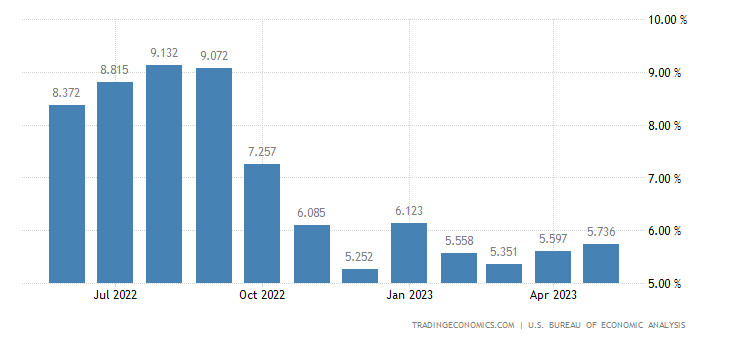By Victor Assad
Last week, there was an explosion of news about the labor force that rocked the stock market. The big surprise was that hiring was significantly higher than expected. There was some good news: hiring was lower than in April by the US Department of Labor numbers), and the number of employees quitting has fallen slightly this year (though this number remains historically high). Job postings fell slightly, showing that the economy is slowing. Wage growth remains higher than normal but lower than last year.
So, is the labor force reaching an equilibrium? Is the Great Resignation ending?
Let’s look at the numbers:
- Employment numbers were higher than expected, rocking the Dow Jones Industrial Average, which fell over 400 points last Thursday after ADP announced that employers reported hiring nearly 500k employees in June, almost twice what economists expected. On Friday, the US Department of Labor reported much lower hiring numbers. They said that US employers added 209k workers in June, a solid gain, but down from May’s revised number of 306k and this year’s monthly average of 278k. (The hiring number from May 2022 was 400k.) The hiring numbers from ADP and the US Department of Labor show that the US economy remains resilient. The Dow Jones Industrial Average fell further on Friday, by 187 points, as investors believe the Fed will raise interest rates, hurting investments and economic growth and raising the possibility of a soft-landing recession in the second half of the year. The unemployment rate fell to 3.6 percent in June, down from 3.7 percent in May.
- Job postings for May decreased to 9.8 million, down by 496k from April. With 6.1 million people unemployed in May, the number of job postings to unemployed workers is 1.6 to 1. The US still has a labor shortage.
- The quit rate is at 4 million in May, which represents 2.6 percent of the workers in the US. The May quit rate was up slightly from April. But it is down 500k from the 4.5 million of November 2021, which was the highest rate in US Department of Labor records (dating back to 2000).
- Wages grew in May by 5.7 percent, up slightly over April’s 5.6 percent. These numbers are down from the high-water mark of 9.1 percent in July 2022, but wages are still growing at a good clip. Please see the UYS Bureau of Economics Analysis chart below.
- The labor force participation rate was 62.6 percent for May, down from 63.3 percent in February 2020, before COVID. The US economy is still suffering from a labor shortage of some 3 million employees.
These numbers suggest that the Great Resignation is subsiding — and the labor market remains hot. Employees are still in the driver’s seat, with wage growth remaining high and more job postings than unemployed workers. The fight over returning to the office is still an issue, and frankly, it doesn’t need to be. You can avoid the return-to-office tub-of-war and hire and retain great employees.
The hot labor market means that companies would be wise to focus on improving their cultures to motivate a workforce still weary from COVID. Companies with thriving cultures benefit from more engaged employees who are willing to put more time in at work, suggest innovative ideas, and help solve pressing issues.
I advise companies to avoid punishing management behaviors, such as penalizing quiet quitters and conducting quiet firing. As we learned from Behaviorism, punishment leads to unintended detrimental consequences. Employees begin to work against you. Gallup calls this employee group “actively disengaged employees”, which they define as the following:
“Actively disengaged employees aren’t just unhappy at work; they’re busy acting out their unhappiness. Every day, these workers undermine what their engaged coworkers accomplish.”
Instead of carrying out punishing behavior, take the high ground: ask your employees to get involved in solving the organization’s most pressing issues, and focus on improving your organization’s culture.
Our research at InnovationOne shows that organizations which create collaborative and learning cultures are more productive and innovative and have better financial performance.
We have found that companies scoring in the top quartile of our InnovationOne Culture Index© reported higher financial performance than bottom quartile performers by as much as 22 percent. We also learned that the top innovators earned a 6.3 percent total shareholder return premium (stock price appreciation and dividends) over three years. Companies that have been on the top innovators’ list since 2004 delivered a 4 percent premium over 10 years.
Our recently completed joint study with the US Department of Energy shows that higher innovation culture scores improve R&D lab performance. In fact, improving a culture score by just one point (on a 100-point scale) can increase performance in innovation, commercial deployments, partnerships with industry, and academic publications by up to 30 percent.
Culture and innovation can be measured and managed. You can measure and ignite your innovation intelligently.
The US labor market may be reaching an equilibrium, but due to the US labor shortage, employers will still struggle to find and hire great talent. Stay ahead of labor force trends by improving your organizational culture. Take the high ground by inviting your employees to work with management to solve the pressing issues facing the company and its customers. And work on creating a thriving and innovative culture. You will be glad you did.
Contact us to learn more.
About InnovationOne®, LLC.
InnovationOne®, LLC helps organizations worldwide build a culture of innovation and make it sustainable. InnovationOne® uses a scientifically developed assessment to measure, benchmark, and improve your company’s culture and capability to innovate and enjoy better outcomes and financial results. Companies scoring in the top quartile of our InnovationOne Culture Index© reported higher financial performance than bottom quartile performers by as much as 22 percent. Measure and ignite your culture of innovation.


